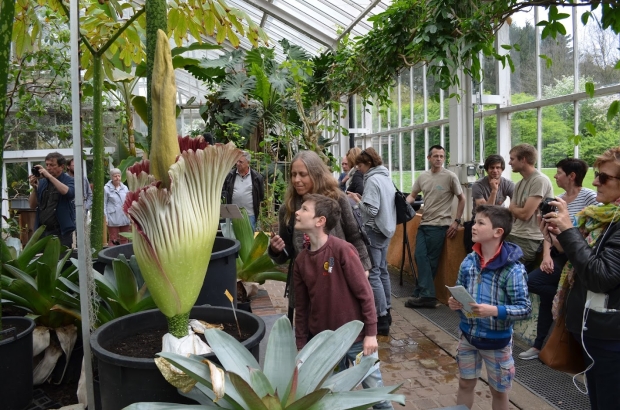- Daily & Weekly newsletters
- Buy & download The Bulletin
- Comment on our articles
'Corpse flower': World’s largest and stinkiest arum about to bloom
An amorphophallus titanum, better known as a giant arum or titan arum, will soon be in bloom for the 16th time at Meise Botanical Garden in the province of Flemish Brabant.
The giant arum is the largest flower in the world, and also the smelliest, which is why it’s also called a corpse flower. It emits a scent described as similar to the smell of rotting flesh in order to attract pollinating insects.
The botanical garden describes this rare specimen as its “most notorious plant.”
“When it starts flowering, it forms an inflorescence that is 1.5 to sometimes more than 3 metres high, which is the largest unbranched inflorescence of all plants,” Meise Botanical Garden explains.
“Flowering only lasts a few days, so it’s important to be there at the right time. Amorphophallus titanum only grows in the wild in the rain forests of Sumatra.”
The botanical garden has several adult specimens of the unusual flower, meaning they can regularly show a flowering specimen: “The Anthropogenic Biome greenhouse in the Plant Palace offers the plants the perfect growing conditions.”
The giant arum will bloom again within a few day’s time, attracting thousands of curious plant lovers from near and far.
While last year there were two giant arum flowers blooming at Meise Botanical Garden, this year only one of the five adult plants will open.
“The four others either still have a large leaf hanging at the top or are not yet sufficiently dormant to flower, meaning we can say with certainty that we will only see one plant in bloom this year,” Koen Es, a botanist at the garden, told Belga News Agency.
The flower that is expected to bloom later this week currently measures 2 metres and 15 centimetres. It is expected to grow slightly first, then fully unfurl and release its notorious odor. The full bloom usually lasts only two to three days.
During the pandemic, a live stream was set up so that people could follow the phenomenon on video. This year, people can once again witness the event physically. The botanical garden will extend its hours of operation in order to accommodate the expected influx of visitors.
Photo: © Meise Botanical Garden

















